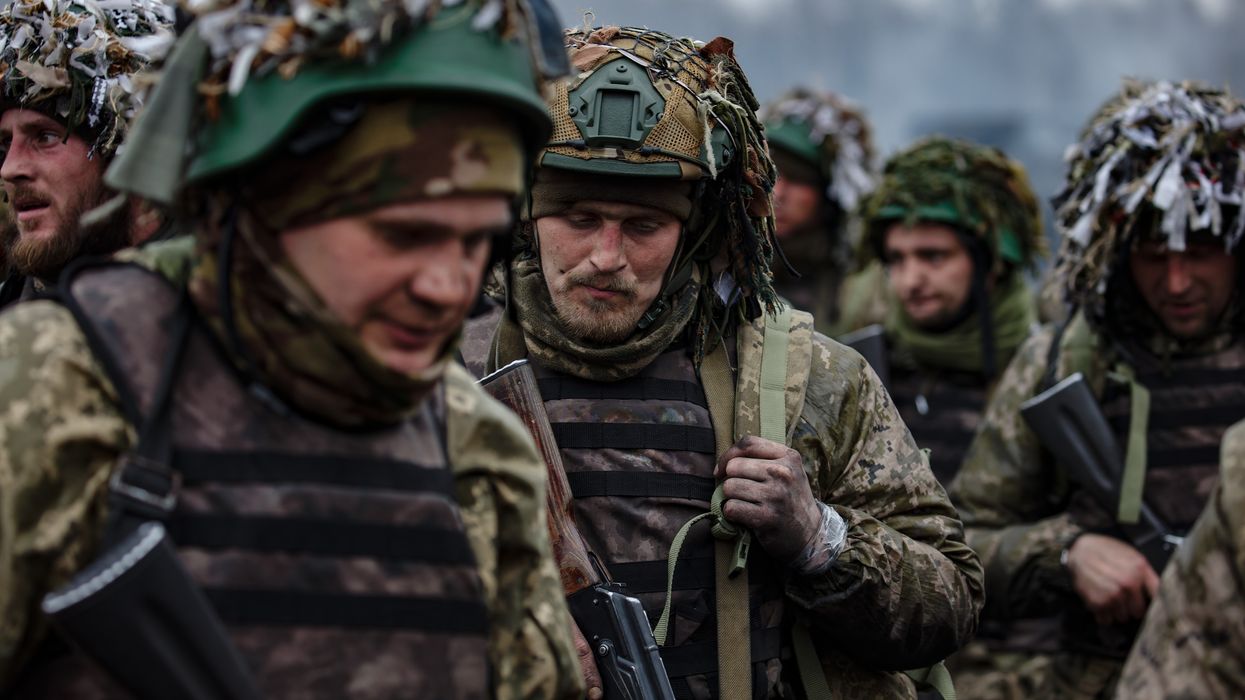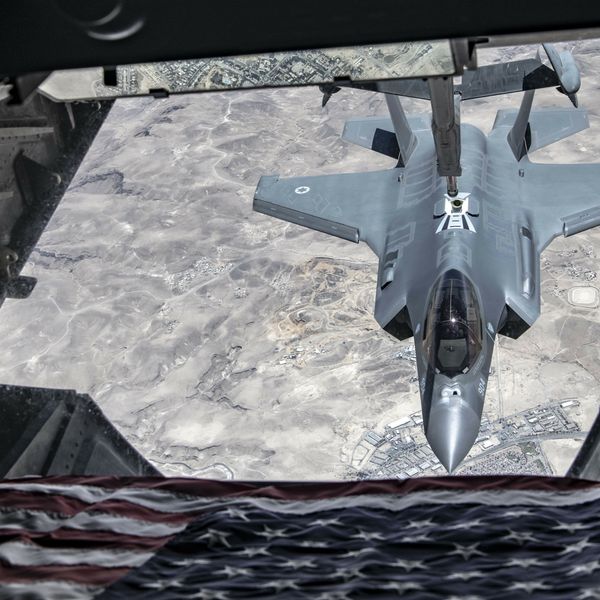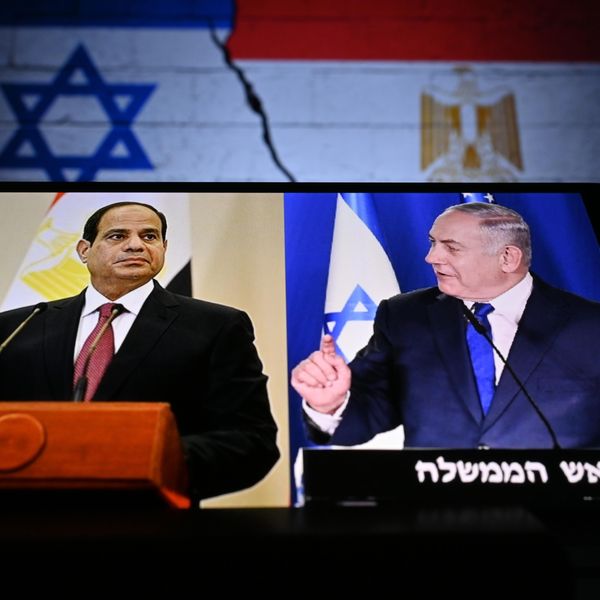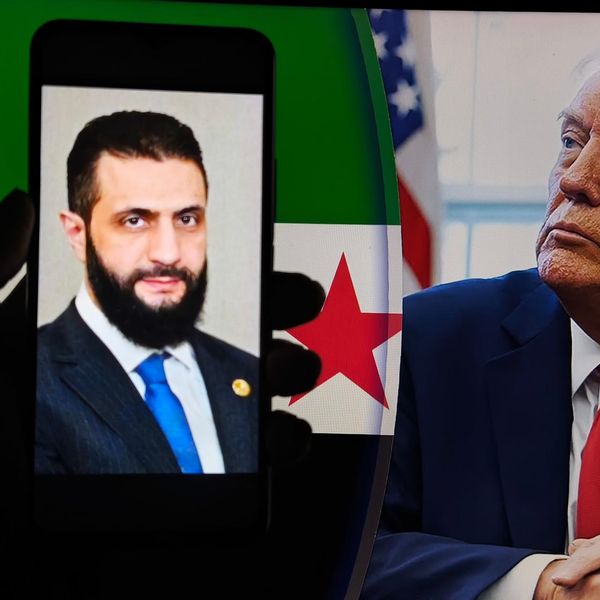Covid-19, an ongoing global human tragedy, may have at least one silver lining. It has led millions of people to question America’s most malignant policies at home and abroad.
Regarding Washington’s war policies abroad, there’s been speculation that the coronavirus might, in the end, put a dent in such conflicts, if not prove an unintended peacemaker -- and with good reason, since a cash-flush Pentagon has proven impotent as a virus challenger. Meanwhile, it’s become ever more obvious that, had a fraction of “defense” spending been invested in chronically underfunded disease control agencies, this country’s response to the coronavirus crisis might have been so much better.
Curiously enough, though, despite President Trump’s periodic complaints about America’s “ridiculous endless wars,” his administration has proven remarkably unwilling to agree to even a modest rollback in U.S. imperial ambitions. In some theaters of operation -- Iraq, Iran, Venezuela, and Somalia above all -- Washington has even escalated its militarism in a fit of macabre, largely under-the-radar pandemic opportunism.
For all that, this is an obvious moment to reflect on whether America’s nearly two-decade-old “war on terror” (perhaps better thought of as a set of wars of terror) might actually end. Predictions are tricky matters. Nonetheless, the spread of Covid-19 has offered a rare opportunity to raise questions, challenge frameworks, and critically consider what “ending” war might even mean for this country.
In some sense, our post-9/11 wars have been gradually subsiding for some time now. Even though the total number of U.S. troops deployed to the Middle East has actually risen in the Trump years, those numbers pale when compared to the U.S. commitment at the height of the Iraq and Afghanistan wars. The number of American soldiers taking fire overseas has, in recent years, dropped to levels unthinkably low for those of us who entered the military around the time of the 9/11 attacks.
That said, in these years, even unwinnable, unnecessary wars have proven remarkably unendable. For evidence of this, look no further than that perennial war hawk Senator Lindsey Graham of South Carolina. Given the lack of success of the various campaigns run by U.S. Africa Command, or AFRICOM, across that continent and the Pentagon’s stated desire to once again pivot to great-power competition with China and Russia, just before the pandemic arrived on our shores Secretary of Defense Mark Esper announced plans for a modest troop drawdown in parts of Africa. Appalled by even such minor retrenchments, Graham, leading a bipartisan group of lawmakers, reportedly confronted Esper and threatened to make his “life hell,” should the secretary downsize U.S. forces there.
Less than two months later, AFRICOM declared a public-health emergency at the largest of this country’s African bases in Djibouti amid concerns that even far smaller, more spartan American facilities on that continent lacked the requisite medical equipment to fight the spreading virus. Whether the pandemic facilitates Esper’s contemplated reductions remains to be seen. (A mid-April AFRICOM press release offering reassurance that the “command’s partnership endures during Covid-19” doesn't bode well for such a transformation.)
Still, the disease will surely have some effect. Just as quarantine and social-distancing measures have transformed people’s lives and work in the U.S., Washington's war fighting will undoubtedly have to adapt, too. Minimally, expect the Pentagon to wage wars (largely hidden from public view) that require ever fewer of its troops to fight shoulder-to-shoulder with allies and fewer still to die doing so. Expect Washington to mandate and the Pentagon to practice what might increasingly be thought of as social-distancing-style warfare.
Soldiers will operate in ever smaller teams. Just as senior leaders constantly counseled us junior officers in the bad old days to “put an Iraqi face between you and the problem,” so today’s and tomorrow’s troopers will do their best to place drones or (less precious) proxy lives between themselves and enemies of any sort. Meanwhile, the already immense chasm between the American public and the wars being fought in its name is only likely to widen. What may emerge from these years is a version of war so unrecognizable that, while still unending, it may no longer pass for war in the classic sense.
To grasp how we’ve made it to a social-distancing version of war, it’s necessary to go back to the earlier part of this century, years before a pandemic like Covid-19 was on anyone’s radar screen.
American Wars Don’t End, They Evolve
When, as a young Army lieutenant and later captain, I joined what were then called “surges” in Iraq in 2006 and Afghanistan in 2011, conventional foot soldiers like me were the main game in town. The doctrine of counterinsurgency, or COIN, then ruled the Pentagon’s intellectual roost. The trick, so key commanders believed, was to flood the war zone with infantry brigades, securing the conflict’s "center of gravity": the locals. Behind the scenes, Special Operations units were already taking on ever-larger roles. Nevertheless, there were ample “boots-on-the-ground” and relatively high casualties in conventional units like mine.
Times have changed. Full-scale invasions and long-term occupations, along with COIN as a war-on-terror cure-all, long ago fell out of favor. By Barack Obama’s second term, such unpopular and costly campaigns were passé. Even so, rather than rethink the efficacy of imperial interventionism, Washington simply substituted new methods masquerading as the latest strategy of success.
By the time Donald Trump delivered his “American carnage" inaugural address, the burdens of Washington war-making had flipped. When I served in Iraq and Afghanistan, about half of the Army’s 40-odd combat brigades were deployed in those two regional theaters at any given time. The remainder were training for their next rotations and already on the "patch chart" where each unit’s logo indicated its future scheduled deployment. This was the life on the conveyor belt of American war that a generation of soldiers like me lived. By January 2017, however, the number of conventional brigades deployed in the war on terror could be counted on one hand.
For instance, the Army’s most recent round of deployments, announced this April, included just six brigades. Of these, two were aviation units and, among the ground forces, one was headed for Europe, another for Kuwait. Only two ground combat brigades, in other words, were slated for Iraq, Syria, or Afghanistan and one of them was a reconstituted Security Force Assistance Brigade -- essentially a skeleton crew of officers and noncommissioned officers meant to train and advise local troops. Meanwhile, the Pentagon’s Special Operations forces, which had by then crested above 70,000, a figure so large as to raise questions about how “special” they remained, stepped onto that conveyor belt. America’s commandos now bear most of the burden of forever-war deployments and (modest) casualties.
A Two-Tier War-Making System
When the virus struck, the Pentagon had long been developing a bifurcated military machine with two separate and largely discrete roles. The commandos -- with key assists from drones, CIA paramilitaries, local proxies, and private security contractors -- continued to fight the lingering war on terror. They were generally handling the lethal end of American war, calling in airstrikes, while training, advising, and sometimes even leading often abusive indigenous forces.
Conventional active-duty brigades -- reduced to 32 -- were largely given quite a different task: to prepare for a future revamped Cold War with Russia and, increasingly, China. That crew -- infantry, armored brigades, and Navy carrier squadrons -- had the “new,” purportedly vital mission of checking, containing, or challenging Moscow in Eastern Europe and Beijing in the South China Sea. Senior generals and admirals were comfortable with such Cold War-style tasks (most having been commissioned in the mid-1980s). However, viewed from Russia or China, such missions looked increasingly provocative as ever more American riflemen, tanks, and warships regularly deployed to former Soviet republics or, in the case of the Navy, to Western Pacific waters that abut China, making the risk of accidental escalation seem ever more conceivable.
Meanwhile, those shadowy special operators were directing the ongoing shooting wars and other conflicts, which, though given precious little attention in this country, seemed patently counterproductive, not to say unwinnable. For the Pentagon and military-industrial-complex profiteers, however, such unending brushfire conflicts, along with a new great-power buildup, were the gift that just kept giving, a two-tiered modus operandi for endless war-funding.
Enter the coronavirus.
In Cold Blood
Thought of a certain way, American war will, in the future, increasingly be waged in cold blood. While Covid-19 spreads virally through respiratory droplets, the disease of endless war continues to be blood-borne (even if ever less of it is American blood), ensuring that the social-distancing-style combat of the future could become even more of an abstraction here.
In addition, the preferred post-pandemic warriors of that future may not be uniformed soldiers, special or otherwise, or necessarily American -- or in some cases (think drones and future robotic weaponry) human. U.S. war fighting has already been increasingly privatized. Only recently, Erik Prince, the former CEO of the private military company Blackwater, an influential Trump ally as well as the brother of Secretary of Education Betsy DeVos, pitched the president on a far-fetched plan to privatize the whole Afghan War.
The Donald passed on the offer, but that it was even considered at such a high level suggests the role of private contractors and soldiers of fortune in future American war-making may be here to stay. In that sense, the recent fiasco of an armed raid led by former Green Berets-turned-mercenaries and aimed at the Venezuelan government of Nicolás Maduro may prove as much a foreboding glimpse of the future as it was a farce.
When uniformed U.S. service members are deemed necessary, the trend toward using just handfuls of them to run an increasingly proxy-war machine is likely to accelerate. Such teams will fit well with public-health guidelines limiting gatherings to 10 people. For instance, drone ground control stations, essentially mobile trailers, require only a pair of operators. Similarly, the military’s newest cyberwar branch (formed in 2015) may not be made up of the hackers of Donald Trump’s imagination (“somebody sitting on their bed that weighs 400 pounds”), but they, too, will work in tiny teams abroad, and at a great distance. Pushing those guidelines just a tad will be Army Special Forces A-Teams of 12 Green Berets each, which may prove to be core building blocks for a new American version of post-pandemic warfare.
Most disturbingly, American social-distancing ways of war will likely operate smoothly enough without suppressing terrorist groups any more successfully than the previous versions of forever war did, or solving local ethno-religious conflicts, or improving the lives of Africans or Arabs. Like their predecessors, future American wars in cold blood will fail, but with efficiency and, from the point of view of the military-industrial complex, lucratively.
Here, of course, is the deep and tragic paradox of it all. As the coronavirus should have reminded us, the true existential threats to the United States (and humanity) -- disease pandemics, a potential nuclear Armageddon, and climate change -- will be impervious to Washington’s usual military tools. No matter the number of warships, infantry and armored brigades, or commando teams, none of them will stand a chance against lethal viruses, rising tides, or nuclear fallout. As such, the Pentagon’s plethora of tanks, aircraft carriers (themselves petri dishes for any virus around), and towers of cash (sorely needed elsewhere) will, in the future, be monuments to an era of American delusion.
A rational (or moral) system with any semblance of genuine legislative oversight or citizen input might respond to such conspicuous realities by rethinking the national security paradigm itself and bringing the war state to a screeching halt. Unfortunately, if America’s imperial past is any precedent, what lies ahead is the further evolution of twenty-first-century imperial war to the end of time.
Post-Pandemic War
Still, Covid-19 may prove the death knell of American war as classically imagined. Future combat, even if broadly directed from Washington, may be only vaguely “American.” Few uniformed citizens may take part in it and even fewer die from it.
During the prolonged endgame of wars that don’t really end, U.S. military fatalities will certainly continue to occur in occasional ones and twos -- often in far-flung places where few Americans even realize their country is fighting (as with those four U.S. troops killed in an ambush in Niger in 2018 and the Army soldier and two private contractors killed in Kenya earlier this year). Such minuscule American losses will actually offer Washington more leeway to quietly ramp-up its drone attacks, air power, raiding, and killing, as has already happened in Somalia, with assumedly ever less oversight or attention at home. As in the Horn of Africa of late, the Pentagon won’t even have to bother to justify escalations in its war-making. Which raises a sort of “if a tree falls in the forest and no one is there...” conundrum: if the U.S. is killing brown folks around the world, but hardly anyone notices, is the country still at war?
Moving forward, policymakers and the public alike may treat war with the same degree of entitlement and abstraction as ordering items from Amazon (especially during a pandemic): Click a button, expect a package at the door posthaste, and pay scant thought to what that click-request set in motion or the sacrifice required to do the deed.
Only in war, one thing at least stays constant: lots of someones get killed. The American people may leave their wars to unrepresentative professional “volunteers” led by an unchecked imperial presidency that increasingly outsources them to machines, mercenaries, and local militias. One thing is, however, guaranteed: some poor souls will be at the other end of those bombsights and rifle barrels.
In contemporary battles, it’s already exceptionally rare that a uniformed American is on that receiving end. Almost midway through 2020, only eight U.S. service members have been killed by hostile fire in Iraq and Afghanistan combined. Yet many thousands of locals continue to die there. No one wants U.S. troops to die, but there’s something obscene -- and morally troubling -- about the staggering casualty disparity implicit in the developing twenty-first-century American way of war, the one that, in a Covid-19 world, is increasingly being fought in a socially-distanced way.
Taken to its not-unimaginable extreme, Americans should prepare themselves for a future in which their government kills and destroys on a global scale without a single service member dying in combat. After the pandemic, in other words, talk of “ending” this country’s forever wars may prove little more than an exercise in semantics.
This article has been republished with permission from TomDispatch.
















